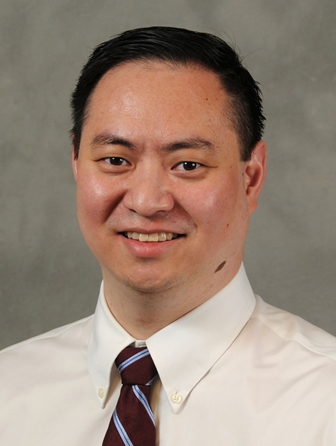 In early-stage (stage I) non-small cell lung cancer (NSCLC), high-dose radiation can be used in lieu of surgery to cure patients. Whether radiation therapy or surgery is performed, the cure rate for early-stage lung cancer is quite high. Once the cancer has spread to nearby lymph nodes in the middle of the chest, the cancer is considered stage III. For stage III cancers, the radiation dose must be reduced to prevent damage to nearby organs, such as the esophagus, the spinal cord, and the heart; this significantly reduces the effectiveness of the treatment.
In early-stage (stage I) non-small cell lung cancer (NSCLC), high-dose radiation can be used in lieu of surgery to cure patients. Whether radiation therapy or surgery is performed, the cure rate for early-stage lung cancer is quite high. Once the cancer has spread to nearby lymph nodes in the middle of the chest, the cancer is considered stage III. For stage III cancers, the radiation dose must be reduced to prevent damage to nearby organs, such as the esophagus, the spinal cord, and the heart; this significantly reduces the effectiveness of the treatment.
LUNGevity Career Development awardee David Kozono, MD, PhD, a radiation oncologist at the Dana-Farber Cancer Institute, typically treats stage III lung cancer patients with 30 to 33 daily doses of radiation over six to seven weeks. Some patients finish the treatment and are completely cured. However, other patients have their cancers return, despite receiving as much treatment as can be safely given.
“It is frustrating to see the cancer come right back and know that you can’t safely give any more radiation,” says Dr. Kozono. Wanting a better way to help his patients, he began looking for a drug that could be used in combination with radiation to make treatments for stage III lung cancer patients more effective.
“Radiation works by damaging so much of the tumor DNA that the tumors simply can’t grow anymore,” explains Dr. Kozono. “So I wanted to find a way to stop the tumors from repairing the DNA damage.”
In preliminary studies, Dr. Kozono found that disrupting proteasomes, which are responsible for breaking down and recycling proteins in tumor cells, can handicap some tumor cells’ ability to repair the DNA damage caused by radiation. It appears to do so by blocking a cellular response to stress called the nuclear factor kappa B (NF-κB) pathway. This research suggested that treating patients with drugs known to inhibit proteasome or NF-κB function might allow the radiation to be more effective.
In 2013, LUNGevity funded a research grant to allow Dr. Kozono to identify radiosensitizers, drugs that can make the tumor cells easier to kill with radiation treatment.
The compound DMAPT (dimethylaminoparthenolide), an NF-κB inhibitor, stood above the other compounds that were tested. Using mouse models, the researchers found that with radiation alone, the tumor shrank but eventually returned. And with DMAPT alone, there was no effect on tumor growth. However, when Dr. Kozono’s team treated the mice with a combination of DMAPT and radiation, they had astonishing results: the tumors shrank and did not return even after 100 days of monitoring.
“It is still early days, but I am excited by the hope this work will reach patients,” says Dr. Kozono. “Giving patients a few extra years with radiation treatment is good. But curing them with radiation and giving them a lifetime is better.” Dr. Kozono is continuing to conduct research to identify which tumors are mostly likely to be cured when treated with the combination of radiation and DMAPT.
Dr. Kozono’s research experiences have also opened the door to new opportunities. Dr. Kozono is now designing clinical trials, too. He is currently leading part of a phase 1/2 clinical trial looking at the effects of combining another DNA repair drug with a radiation and chemotherapy regimen to treat stage III NSCLC patients.
Juhi Kunde, MA, is a science writer for LUNGevity. 
